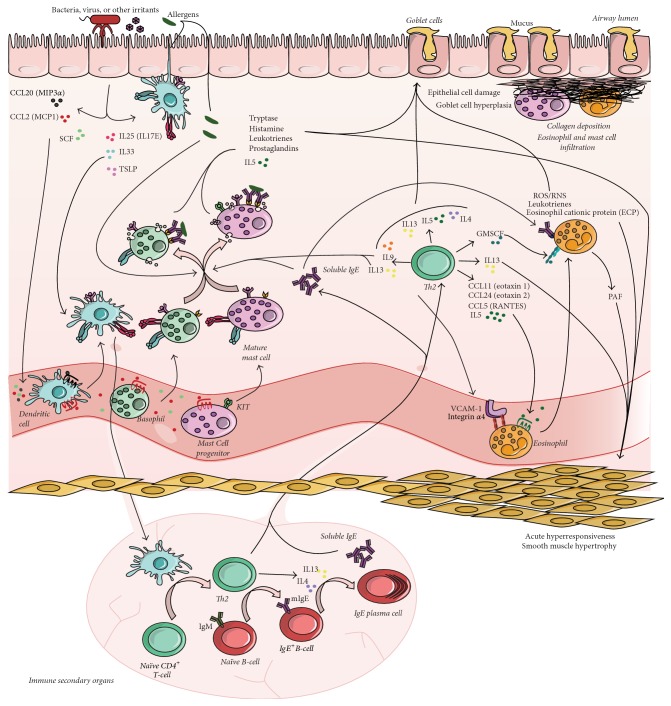Figure 1.
Pathophysiology of allergic asthma. Volatile allergens and/or other irritants can activate sentinel dendritic cells and/or epithelial cells in the airway epithelium that will also recruit and activate dendritic cells. The activation of dendritic cells will trigger Th2 responses, leading to the accumulation of soluble IgE as well as several cytokines. These cytokines will recruit mast cell progenitors, as well as basophils and eosinophils, which will be activated and secrete proinflammatory cytokines and other soluble factors such as histamine, tryptase, prostaglandins, and leukotrienes. As a consequence, there will be an increase in mucus production and bronchoconstriction (for mechanistic details, see text). If this activation is maintained, the airway will suffer persistent structural changes that will cause chronic bronchoconstriction due to fibrosis in the subepithelium and smooth muscle hypertrophy. mIgE: membrane IgE; PAF: platelet-activating factor.

